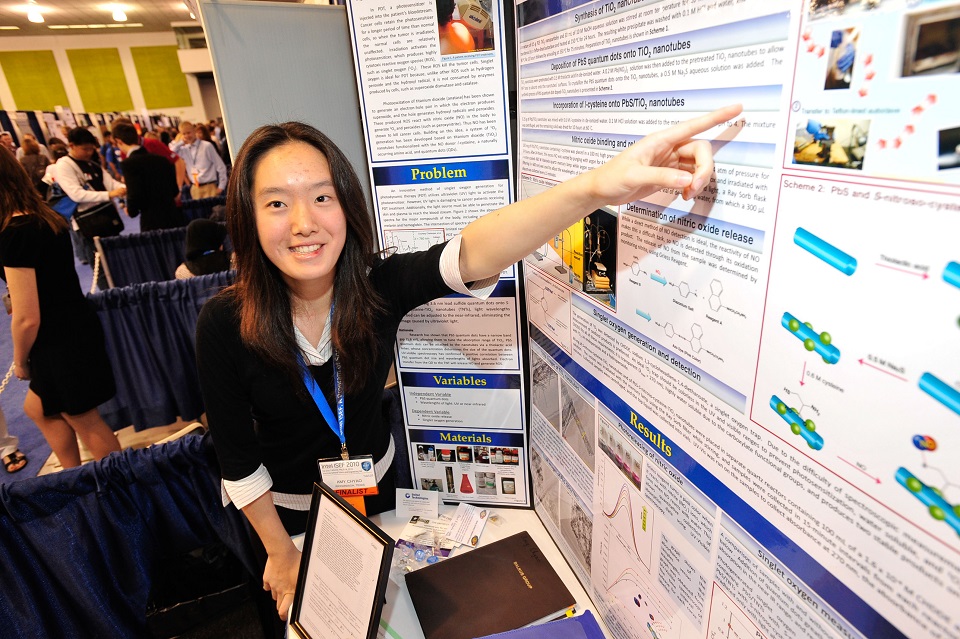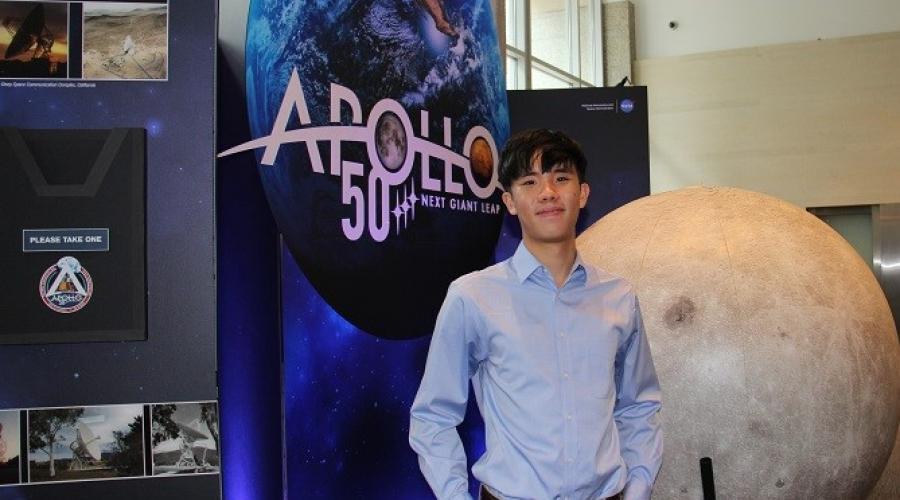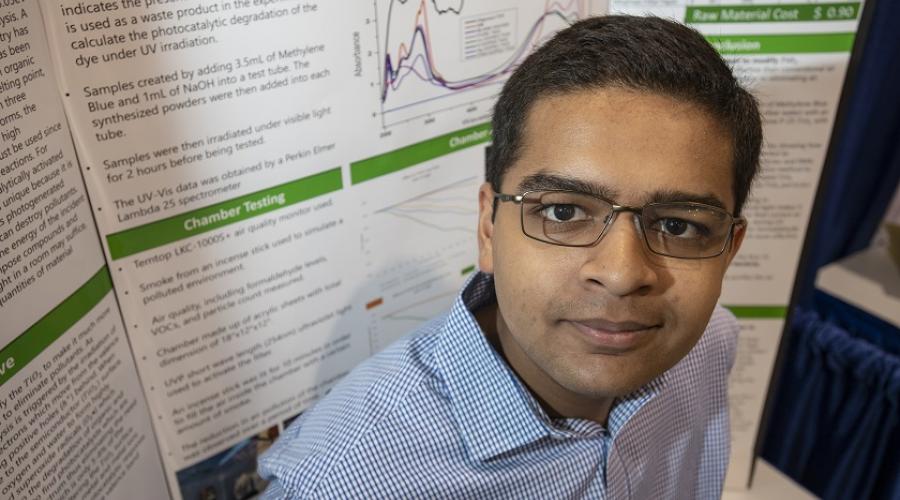NIDA Offers Awards at Intel ISEF to Spread Awareness of Addiction Science
The National Institute of Drug Abuse (NIDA) is one of 27 institutes and centers at the National Institutes of Health. NIDA, in conjunction with the Friends of NIDA, provides an Addiction Science Award at Intel International Science and Engineering Fair (Intel ISEF) 2013. The answers below were provided by Carol Krause, Chief, Public Information and Liaison Branch, Office of Science Policy and Communications, National Institute on Drug Abuse, National Institutes of Health.
Can you tell us about your organization and why scientific research is important to it?
NIDA is one of 27 institutes and centers at the National Institutes of Health, and we support most of the world’s research into drug addiction. Our mission is to bring the power of science to bear on drug abuse and addiction, and our professional lives are dedicated to that goal. Addiction is a chronic, relapsing disease that affects the brain, the body and most certainly, human behavior. It is also a treatable disease, and we are learning more about effective prevention and treatment strategies every day. So we work with our private sector partner, the Friends of NIDA, to build a pipeline of high school scientists going into colleges and universities who will already have an understanding of addiction science.
What made your organization decide to offer a special award at Intel ISEF?
NIDA offers 1st through 3rd place awards in Addiction Science. We want young scientists to understand the depth and breadth of our field. It’s not just about treating people who are addicted; research spans from very basic science and neuroscience to behavioral therapies and community interventions. As a result, the winners we select come from many different categories at Intel ISEF and the students themselves may not at first realize the application of their research to addiction science. For example, we gave an award to a young woman who used artificial intelligence to build a computer tool to evaluate danger and tranquility in an urban area of her home town. We recognized the usefulness of this approach to identify geographic areas at risk for higher rates of drug use. She was thrilled that her research could be used in that way.
Why do you think it’s important for students to participate in events such as the Intel ISEF?
NIDA’s Director, Dr. Nora Volkow, very much wants to encourage students to pursue the field of addiction science. So students should know that by entering Intel ISEF and having their projects reviewed by Special Award judges, they are not only being exposed to a variety of career opportunities down the road, they are also being noticed by top names in scientific fields. In addition, even if you do not become a scientist, knowing the scientific process is important. Being able to make assumptions based on research and facts, paying attention to details, and building a strategic plan for decision-making are vitally important skills not only for science, but in any career, and with anything you do in life. As an added bonus, learning how to present research at an event like Intel ISEF serves students well.
What impact do you think you, as an organization that provides awards, have on students interested in scientific research?
First of all, these are students who should be applauded for their hard work and efforts. However, NIDA takes it further than that. In addition to providing awards, we stay in touch with our winners. When budget allows, we bring these young scientists to NIDA and have them present their research to our scientists. We arrange internships for many of them, either in our labs or other program areas. We also are helping them to understand the exciting path ahead of them if they choose to become a scientist.
What are the elements of a good science fair project?
NIDA of course identifies projects related to addiction science. In judging, we focus on three things: (1) was it original research and did the student actually do the majority of the work; (2) was it an innovative idea? This past year, we gave an award to a young woman who looked at the impact of the dangerous drug called “bath salts” on fruit flies. It sounds simple, but no one at Intel ISEF had looked at the health effects of bath salts before, at least in our memory. Not only did it contribute to the field; it gave us a project that helped us illustrate the danger of these drugs in a way that teens could understand.; (3) students who really do their homework and understand the broader field, not just their project. For example, a recent winner focused on the impact of screen time (television, computer, etc.) on decision making. In addition to collecting data on screen time, she also studied the role of the brain’s prefrontal cortex and how it develops in teenagers. So when she started her project she was already well versed in the broader implications of her research.
Do you have advice for other government agencies (or organizations) about how to be involved in Intel ISEF?
Intel ISEF is a great way to get the name and mission of your organization in front of the bright young minds, who will no doubt one day be running the world. The challenge for government agencies is finding a funding source for the cash part of the award—since we have budgetary and regulatory restrictions on this kind of funding. The good news is that it doesn’t have to be a lot of money. NIDA offers a total of $5,000, split among the 3 winners. NIDA is lucky to have a relationship with Friends of NIDA, a private sector partner that provides the award money. A good place for a government agency to start would be to educate private sector partners about the benefits of participating in an event like Intel ISEF. I would let partners know about the purpose and reach of the fair, and how it exposes future leaders to their organization. While agencies cannot directly solicit the funds, they can offer to provide judges if a private sector group wants to participate.
Organizations do need to provide judges in order to offer an award. One way to cut costs, especially with strict government travel restrictions, is to recruit volunteer judges from grantee institutions in the cities holding the fair. This past year in Phoenix, NIDA asked grantees from Arizona State University to be judges, and they loved it. The fair is always located near several major universities filled with scientists who would enjoy judging the fair. While I still travel to the fair each year, and enjoy doing so, eventually I will be able to manage our efforts from afar and recruit volunteers only from our robust network of grantees.
Do you have any advice for organizations interested in becoming involved at Intel ISEF?
I have been attending Intel ISEF since 2007 and it has been a life changing experience for me. With all the bad news that you hear about kids these days, experiencing Intel ISEF offers hope for the future of the world. These kids come from more than 50 countries, and they are future scientists and leaders. It is tremendous to learn what is going on in their remarkable brains.
Offering an award at Intel ISEF introduces these intelligent young people to your name and organization, and encourages them to consider your field as a career path. Many students weren’t familiar with the National Institutes of Health or NIDA prior to meeting us at the fair; now students are not only familiar with us as well as addiction science, but also with the NIH grant system —something they may need to know if they become career scientists.
I would like to stress that this is such a personally rewarding experience. Every year, I look forward to meeting these kids and know that in turn NIDA can play a role in nurturing their careers. We don’t often have the opportunity to touch individual lives like this at the federal level. Researchers from all over the country read our press release about our student winners and want to be put in touch with the students to learn more about their unique research; I love being that link.
Recent Winners:
Winners of the Addiction Science award in 2013 include Zarin Rahman from Brookings, South Dakota for “The At-Risk Maturing Brain: Effects of Stress Paradigms on Mood, Memory and Cognition in Adolescents and the Role of the Prefrontal Cortex;” Emory Payne and Zohaib Moonis from Worcester, Massachusetts for “The Effect of Ethanol on Beta Cell Development in Zebrafish;” Alaina Sonkson from Camdonton, Missouri for “Determining the Behavioral and Physiological Effects of Pentedrone-Based “Bath Salts” on Drosophila melanogaster;” and Gili Rusak from Latham, New York for “Properties of Twitter Network Communications Among Teenagers.”



